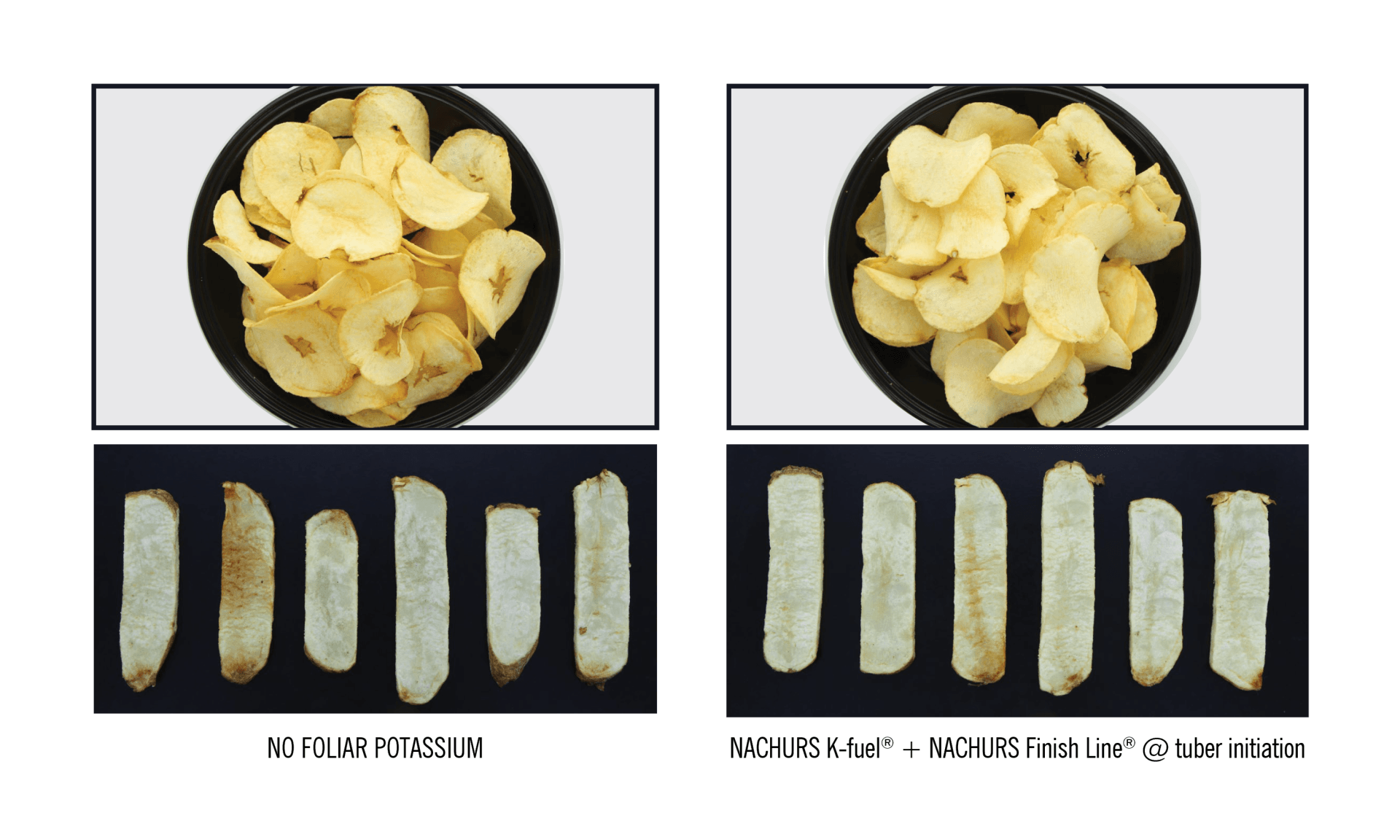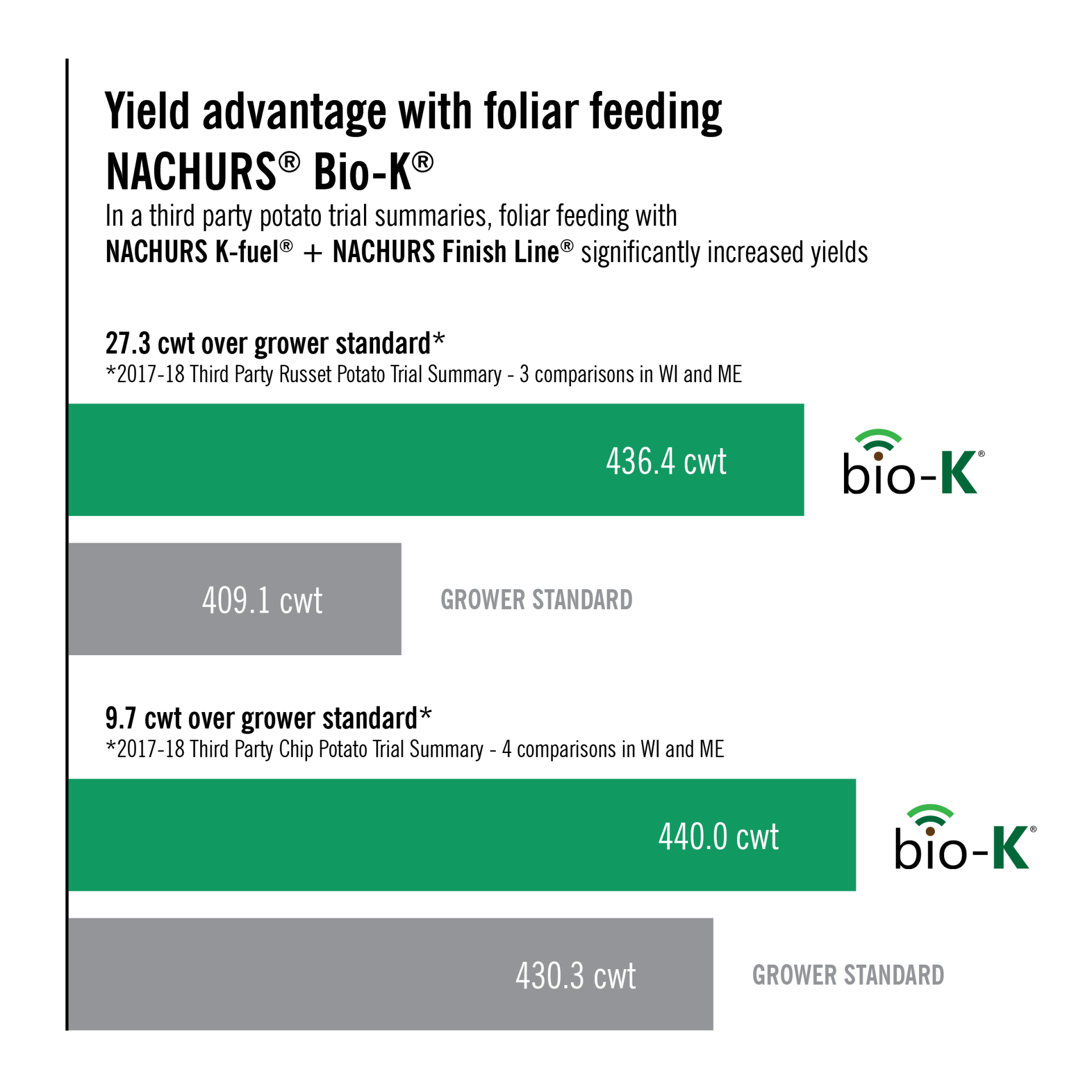Maximize yield and improve tuber quality with NACHURS® Bio-K®
Potatoes have a strict requirement for balanced plant nutrition in order to optimize crop yield and maximize tuber quality by avoiding nutrient deficiencies, nutrient antagonisms in soil and/or in the plant, and increasing tolerance to adverse conditions. Among the major plant nutrients, potassium not only increases yield by improving physiological efficiencies but also enhances various quality aspects such as specific gravity, total solids, sugar and starch content, bruising (mechanical, blackspot), hollow heart, fry quality, and storage.
A balanced fertility program can be accomplished in various ways through preplant, at-planting, foliar, and/or fertigation methods. In regards to potassium, we know from years of research that nutrient demand is highest from early tuber initiation and continues to mid tuber bulking.
NACHURS answer to meet this high potassium demand when the potato plant needs it the most is our “2 & a Q” foliar program.
2 & a Q: it’s that simple!
WHAT IS IT?
- 2 gal NACHURS K-fuel® : High K fertilizer for foliar and fertigation with the highest concentration of NACHURS® Bio-K®
- 1 qt NACHURS Finish Line® : Balanced NPK plus a high load of micronutrients for maximum tank-mix compatibility
WHEN SHOULD I USE IT?
Apply at tuber initiation (will vary by environment and by variety) regardless of prior fertility program or current nutritional status (specifically potassium) determination via tissue/petiole sampling.














